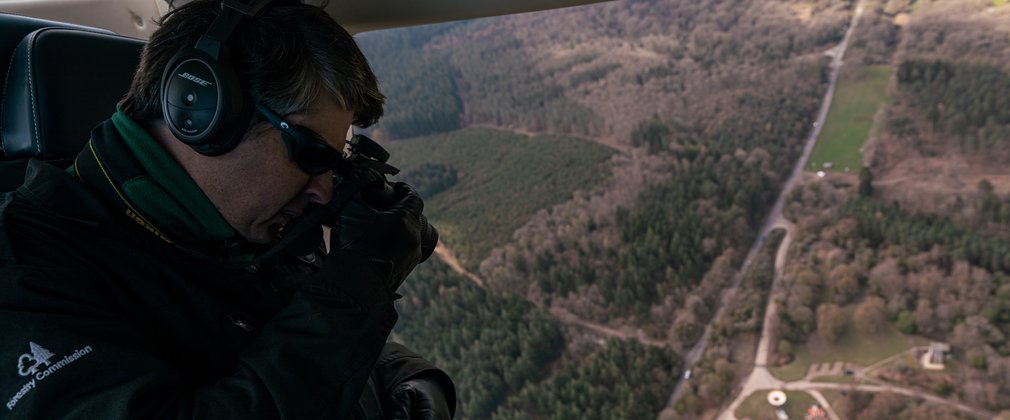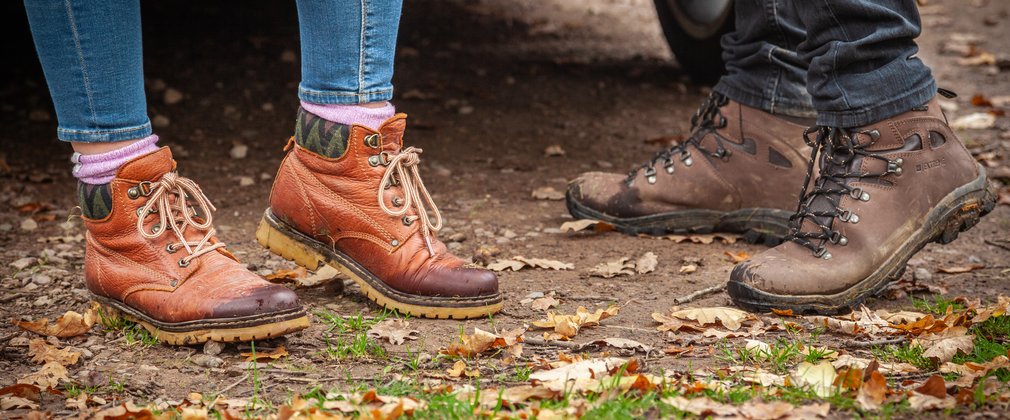What is Phytophthora Ramorum?
Phytophthora ramorum is an algae like organism called a water mould. It causes extensive damage and death to more than 150 plant species, including some forest species.
Larch trees, which were widely planted for the timber market, are now known to be particularly susceptible, and large numbers have been affected. It is sometimes referred to as 'Larch Disease'.
Phytophthora ramorum does not just affect Larch, it can also affect European sweet chestnut trees and other species.
How do you know trees have been infected?
Forestry England work with Forestry Commission Tree Health Team who undertake regular aerial plant health surveys and flights. This summer they have identified significant outbreaks across the country, once identified they work with local Forestry England teams to collect samples and confirm the infection on the ground.
How does it spread, and can it be stopped?
Phytophthora ramorum spores can be spread over long distances via mists, air currents and watercourses. It can also be spread on footwear, dogs' paws, tools, equipment, and vehicle wheels, including buggies and mountain bike wheels. Localised movement over short distances by wild animals such as deer and feral boar might also be possible.
Preventing and minimising spread
Visitors to woods, forests, parks and public gardens can help to minimise the spread of ramorum disease and other plant diseases. You can do this by brushing soil, mud and leaf debris off your footwear and wheels of bicycles, baby buggies and wheelchairs - before leaving the site. We recommend washing these items at home before visiting another site.
There are additional biosecurity requirements for people who work in or manage woods and forests, such as foresters, forestry workers, tree surgeons and timber hauliers.
Can it be stopped?
There is no cure for Phytophthora ramorum disease available at the moment, and there are no effective chemical treatments. There are fungicides which can suppress the symptoms, but none will kill the disease.
The aim of any control measures is to prevent or minimise further spread of the disease and the damage it causes. The best available scientific advice is to remove and kill the living plant tissue on which the organism depends for reproduction. This means that infected plants that are releasing spores, such as larch trees, should be felled or otherwise killed as quickly as possible after detection of the disease. Trees that can be coppiced such as sweet chestnut must be felled and killed at the stump to prevent regrowth.
What happens to the timber once its felled?
The felled timber can be used but it must be done by following agreed biosecurity measures. In England any movement of wood from a site infected by phytophthora requires a movement licence from the Forestry Commission before the timber can be transported. This is to minimise the risk of spreading the disease during forestry and timber operations. Wood from infected trees can only be taken to a processing facility, such as a sawmill, which has a processing licence.
Future proofing our Forests
What we plant now will be the forests of 50 years’ time, so it is important that we plan our forests properly and make site by site decisions to develop and care for our woodlands. Recognising the importance of local species and the importance of genetic diversity. The aim is to establish the right tree in the right place for the right reason. This requires knowledge and practical understanding of what tree species will grow best, considering soil type and site conditions and using the best scientific evidence available to predict the impact of a changing climate, pests and disease will have on the forests of the future.
Find out how we are keeping our trees healthy.
Do your bit and help keep it clean
There are simple steps you can take to help limit the spread of plant diseases when you visit woodlands, parks and gardens. Tree and plant diseases can live in mud and water.
Brush off all mud and dirt from walking boots, buggies and bike wheels, before you leave the forest and make sure you clean thoroughly before visiting other forests.


